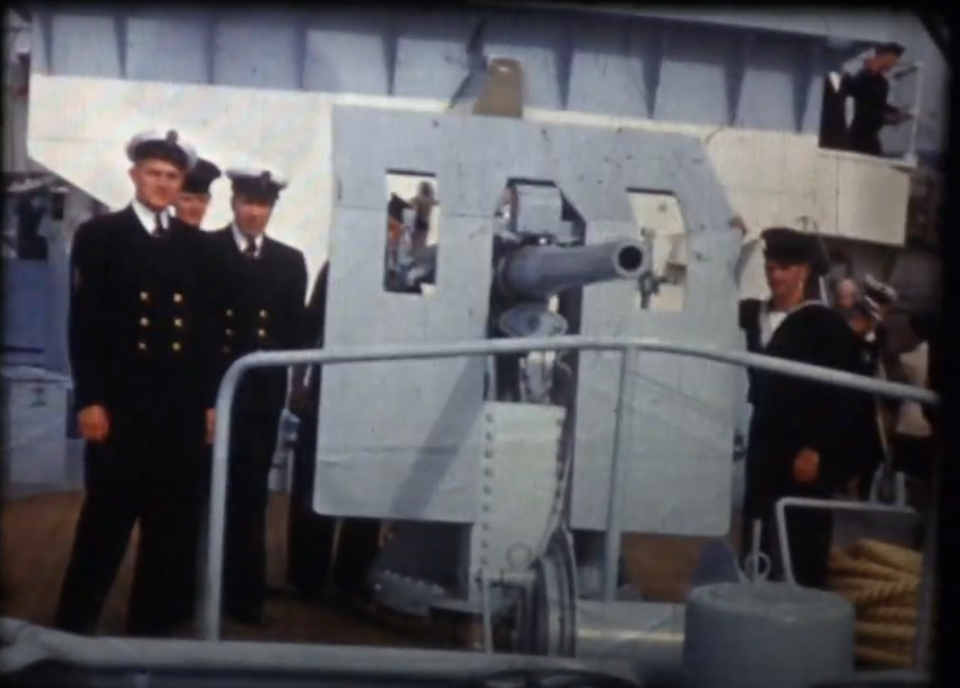KENORA — In the basement archives of the Lake of the Woods Museum, executive director Braden Murray discovered an artifact that was so curiously tantalizing that he ignored the warning of caution to the treasures.
The artifact was an old film canister that carried a warning. The warning — a label that read “explosive, do not view.”
“It had been donated at some point in the past. I'm not exactly sure when it came in. It didn't have any sort of name associated with it. The only thing I knew about it was that there was a label on it that said, “dangerous explosive dispose of.” And I thought, oh, boy, what do we have here?” Murray said in an interview with NWOnewswatch.
Murray soon discovered that the film was coated with cellulose nitrate.
Cellulose nitrate is a mixture of nitric acid and sulfuric acid that was used as a film base in the late 19th century. Photographers would coat the rolls of film to facilitate photosensitive emulsion. It is highly flammable and also decomposes with age.
“I contacted some conservators and said, “Hey I have this film, what should I do with it?” And, they said “well, it's probably pretty explosive or pretty dangerous. It could definitely burn. You should probably get rid of it. I said, no,” reflected Murray.
Determined to see what was on the film, Murray borrowed a projector from the library and set it up in the courtyard at the Lake of the Woods Museum.
Armed with a couple of fire extinguishers, Murray pressed play.
The nearly seven-minute clip covers two events.
The first showed a Main Street parade for the arrival of Prince George, the Duke of Kent, on Aug. 17, 1941.
“I think he must have been banging the drum for war bonds or these sorts of things. But he was in Canada for some reason and he flew into the airport. He was picked up, by OPP, by a local officer Bill Bodger and he was driven through town. There was a great parade and at the time the city hall was on Main Street, but it was kind of diminutive. It was pretty small. It’s not a particularly impressive building. It's currently a barber shop so it's not, it's not sort of the place where you want to take royalty,” Murray said.
“So, they took the prince of the Duke of Kent down to the courthouse on Water Street and had him sign the official guest book and that he was greeted by the mayor and there were speeches and it was a real kind of rah-rah war effort, sort of event.”
According to Murray, Prince George was the official of Federal Conservative MP Robert Rogers, who owned property on the Lake of the Woods.
In addition to the parade, the film also shows some lake scenes, including views of the Miniwawa (the huge motor launch) underway.
Then the film cuts to the second event which was the christening of HMCS Kenora in Thunder Bay, on Aug. 6, 1942.
HMCS Kenora was a Banglor class Minesweeper ship used during the Second World War. It was built by Port Arthur Shipbuilder.

The wife of Hugh McKinnon, the local Federal MP, christened the boat. The film also shows local Kenora dignitaries looking on and celebrating. In attendance were Dr. and Mrs. Gunne, Mr. and Mrs. Joe Derry, RH Elliot, R. Bateman, Ernie Bentz, Graham Holland, Webb Godkin, George Carmichael, Ernie Bent, the local brewmaster was there from the Lake of the Woods Brewing Company. Graham Holland Web Godin, and George Carmichael who was a local veteran and was the mayor at the time.
“Yeah, so it's really quite an interesting event. It shows the view of HMCS Kenora in its really neat Second World War dazzle camouflage in full colour which is really great. and showing the sailors and all the dignitaries, kind of walking around the boat and just taking a good look,” said Murray.
HMCS Kenora was busy during the war acting in the frontlines. HMCS Kenora was active on D-Day, June 6th, 1944, clearing the approaches the Utah Beach.
Since the film was too dangerous to mail and travel to have digitized, Murray set up a digital film recorder beside the projector upon viewing.
“I essentially just set up a video camera directly behind where the projector was and just projected onto a screen and just did a high-quality video of the projector. The only thing that I did was I slowed it down some. In its original speed, it was that kind of weird-looking, kind of a little bit too fast movement. So, I did use iMovie to slow it down but other than that is basically exactly how it looked,” explained Murray.
After examining the film, Murray found no indication of who took the film originally.
Murray has since officially disposed of the original due to its volatile nature; however, those interested in seeing Kenora and the Second World War can do so through The Muse’s YouTube channel.
"The film was starting to degrade and that made it even more unstable. It's the sort of thing where it's not worth the risk of keeping around, but I was satisfied that we had the content,” said Murray.